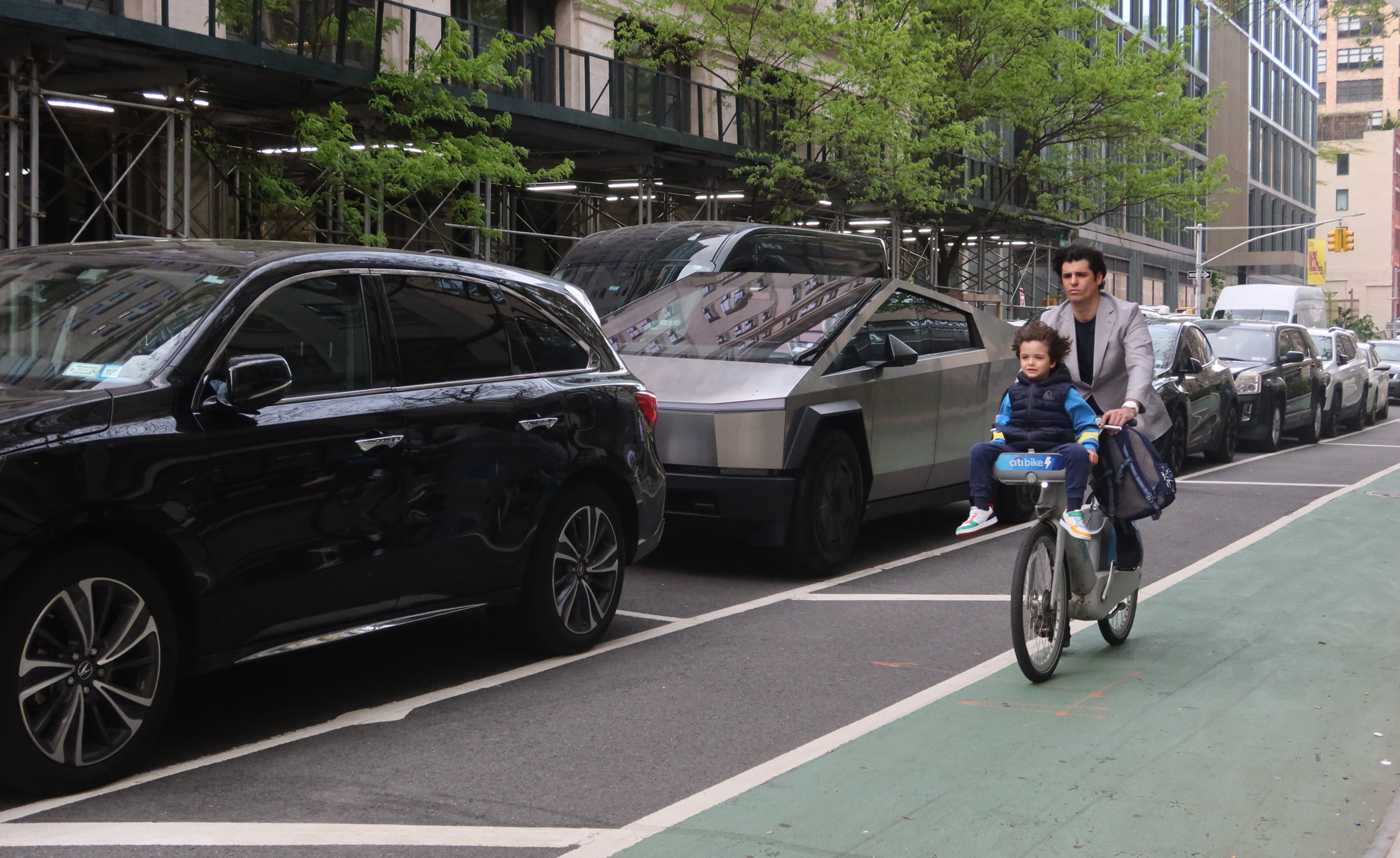Free speech is endangered; unbiased and trustworthy news is elusive. In a time of noise, confusion, and spin, we’re committed to clarity, truth, and depth — even when it’s hard.
We rely on readers like you to fund our journalism. Will you support our work and become a Vox Member today?
More cities are finally choosing bikes over cars.
While walking my son to school a couple of weeks ago, I noticed something odd happening on Court Street, a major thoroughfare that runs through our part of Brooklyn: A lane of the street was being removed, to make room for a protected two-way bike lane.
A weekly dose of stories chronicling progress around the world.
As a father who would like to see his son bicycle more but lives in constant fear of him being pancaked by an SUV while riding in Brooklyn’s packed streets, I was elated by the change — but also surprised. Even in Brooklyn, one of the most densely populated and walkable places in the US, about half of households own a car — and I can tell you from experience, they are very territorial about their right to drive them.
Yet here was my own neighborhood, taking away a lane for cars and giving it to cyclists. It’s part of an effort spreading across New York and cities around the US and the rest of the world, to carve out meaningful, safe space for residents who prefer to get around on two wheels rather than four. And it’s one of the best, most optimistic movements in urban development, one that can make cities cleaner, quieter, and more sustainable.
In central London, as the Economist wrote recently, bikes now outnumber cars two-to-one at peak hours. In Montreal, more than a third of people cycle at least once a week, and use of the city’s bike-share program has doubled since 2019. In Copenhagen, bike trips make up almost half of all commutes. And New York has built the world’s largest bike network, with 1,550 lane miles, 555 protected lanes, and more on the way. With its Citi Bike program, NY has the largest bike-sharing system in the US.
How did we get here? Not by just painting bike lanes on open streets and hoping for the best, but by building routes in cities where cyclists can actually cycle, with safer designs that make biking the obvious, low-stress choice. Cities are knitting together:
In bike-obsessed Europe, street redesigns have gone further. The Belgian city of Ghent’s 2017 plan didn’t just add bike lanes; it specifically filtered auto through-traffic out of the center of the city, nudging drivers to the ring road and reserving inner streets for access by cyclists and pedestrians. The result has been a shift toward more sustainable modes of transport and calmer streets altogether — what you might just call “livability.”
Lastly, the boom in e-bikes, which offer enough electric pedal assist to make an ordinary cyclist feel like Lance Armstrong minus the blood doping, has expanded who can cycle and where, though they can come with real safety concerns.
Start with cost. Swapping out a family car for an e-bike can save thousands of dollars a year, especially as the cost of owning a car has generally been increasing. That switch makes even more sense as cities add secure bike storage sites.
Taking a bike over a short trip as opposed to a car can reduce carbon emissions by 75 percent. Central London, which has combined congestion charging with new cycle paths and dockless bike sharing, has seen conventional air quality improve significantly. And silent bikes don’t contribute to urban noise pollution the way cars — and my particular bête noire, motorcycles — obviously do.
Then there are benefits to health. One UK study linked cycling to work with lower all-cause mortality, as well as lower mortality from cardiovascular disease and cancer. A 2021 meta-analysis found that all-cause mortality declined as hours of cycling rose. These are correlations, and someone who makes a point of biking to work is likely already pretty healthy. But it obviously beats sitting in a car.
Even the most cycling-forward cities like New York are miles (or kilometers) behind top European cycling cities like Copenhagen and Amsterdam when it comes to bike-friendly infrastructure. And like literally every other issue in the entire country, cycling is already becoming polarized in the US, where drivers are loath to surrender their primacy.
While much of that has to do with a car-centric American culture, there are real growing pains as cycling ramps up. Pedestrians already on the watch for cars now have to look out for bicyclists — not all of whom follow traffic laws. E-bikes present a particular challenge. Because they go faster and have more mass, they’re more dangerous both for cyclists themselves and for pedestrians in their way — especially illegal, fast e-bikes that are more moped than bicycle. That is a real problem, and one that could end the cycling renaissance if it’s not addressed.
But while e-bike collisions get a lot of attention, they pale next to the sheer carnage we take for granted on our roads, where over 40,000 people died in motor vehicle accidents in 2023. The number of pedestrians killed by cars is now over 7,000 a year, a number that has been rising for more than a decade. Yet no one is calling to ban cars.
When cities build bikeable routes that feel safe for an 8-year-old like my son, adults who could be in cars will ride bikes, too. And when more people ride, the benefits — safety, clean air, quiet streets — compound.
On Court Street here in Brooklyn, that new protected lane already looks ordinary. That’s the point. Ordinary is how culture changes lives. I still worry about my kid on a bike, because I’m a parent. But I’m also more optimistic than ever, because the street outside his school is quietly teaching him — and his city — a better way to move.
A version of this story originally appeared in the Good News newsletter. Sign up here!
You’ve read 1 article in the last month
Here at Vox, we're unwavering in our commitment to covering the issues that matter most to you — threats to democracy, immigration, reproductive rights, the environment, and the rising polarization across this country.
Our mission is to provide clear, accessible journalism that empowers you to stay informed and engaged in shaping our world. By becoming a Vox Member, you directly strengthen our ability to deliver in-depth, independent reporting that drives meaningful change.
We rely on readers like you — join us.
Swati Sharma
Vox Editor-in-Chief
We accept credit card, Apple Pay, and Google Pay.
Explore the big, complicated problems the world faces and the most efficient ways to solve them. Sent twice a week.
This is the title for the native ad
This technology could feed a world of 10 billion. We’re squandering it, and the trade war with China could make it worse.
Why A House of Dynamite is so damn scary.
Even Trump is fast-tracking this innovative new drug. What could go wrong?
It’s not millennial cringe to wonder if you can enjoy the work of problematic artists.
We’ve made tremendous progress against famine — but hunger hasn’t disappeared.
Our reality could have a mirror image — and it has some serious risks and benefits.
This is the title for the native ad
© 2025 Vox Media, LLC. All Rights Reserved












